Suicide cleanup is an incredibly sensitive and challenging task involving health risks that are often overlooked. The nature of these cleanups demands more than just physical effort. It also requires a deep understanding of the psychological toll it can have on those involved. Whether you’re a professional cleaner from a post-suicide cleanup company or someone facing a cleanup after a personal loss, it’s essential to recognize the health risks, protect yourself, and consider when it’s wise to seek professional help. In this article, we’ll explore both the physical and mental health considerations of suicide cleanup, why they’re crucial, and some practical steps to handle these challenges safely.
Physical Health Risks of Suicide Cleanup
Suicide cleanup often involves exposure to biohazards, which can pose serious health risks. Biohazards include bloodborne pathogens and bodily fluids that may carry harmful bacteria, viruses, and infectious agents. Here’s a closer look at the specific risks involved:

Bloodborne Pathogens
Blood and bodily fluids can carry diseases like Hepatitis B, Hepatitis C, and HIV. Even microscopic droplets can pose a risk if they come into contact with cuts, open wounds, or mucous membranes. This is why personal protective equipment (PPE) like gloves, masks, and goggles are essential.
Chemical Exposure
Cleaning up after a traumatic event often requires using strong disinfectants and chemicals to sanitize the space thoroughly. Without proper precautions, these chemicals can lead to skin irritation, respiratory problems, or eye injuries. Wearing the right PPE and knowing the correct dilution and handling practices for cleaning agents is vital.
Structural Hazards
In some situations, especially in older buildings, there may be hazards such as broken glass, damaged structures, or exposed wires. Cleaning up without awareness of these hazards can lead to injury. Identifying structural risks before starting cleanup can help prevent accidents.
Mental Health Risks of Suicide Cleanup
Cleaning up after a suicide can have a profound impact on a person’s mental well-being. It’s common for individuals to experience intense emotions and trauma-related stress, especially if they know the person involved. Here’s how these mental health challenges can manifest and why they deserve serious attention:
Emotional Distress and Trauma
Encountering the aftermath of a suicide can be a deeply distressing experience, triggering feelings of sadness, shock, or even guilt. For many, it can bring up emotions tied to grief, loss, or personal memories, making the experience emotionally overwhelming.
Post-Traumatic Stress Symptoms
The visual and sensory aspects of a traumatic scene can lead to post-traumatic stress symptoms, such as flashbacks, nightmares, and heightened anxiety. For those who aren’t accustomed to this type of work, these symptoms may persist long after the cleanup.
Compassion Fatigue
This is especially common for professionals involved in repeated exposure to traumatic scenes. Compassion fatigue, or secondary traumatic stress, can result from empathizing deeply with those impacted by suicide. It can lead to emotional exhaustion, loss of motivation, and even detachment from friends and family.
Essential Safety Measures for Physical and Mental Health
With these risks in mind, there are essential safety practices that can help protect both your physical and mental well-being. Here’s how to stay safe and supported if you’re involved in suicide cleanup.

Use Proper Personal Protective Equipment (PPE)
Protect yourself physically by wearing appropriate PPE, including gloves, face shields, respirators, and full-coverage clothing. The Centers for Disease Control and Prevention …
Read More




 Before stepping onto the golf course, you must warm up your body for a few minutes. Warming up helps loosen your muscles and prepares them for the motions ahead. By starting with some light cardio exercises such as jogging or brisk walking. This will get your heart rate up and increase blood flow throughout your body. It also helps in raising body temperature, making your muscles more pliable and less prone to injury. After a quick cardio session, focus on stretching out those key muscle groups used in golfing – shoulders, arms, hips, and legs. Perform gentle stretches such as arm circles, toe touches, trunk rotations, and lunges.
Before stepping onto the golf course, you must warm up your body for a few minutes. Warming up helps loosen your muscles and prepares them for the motions ahead. By starting with some light cardio exercises such as jogging or brisk walking. This will get your heart rate up and increase blood flow throughout your body. It also helps in raising body temperature, making your muscles more pliable and less prone to injury. After a quick cardio session, focus on stretching out those key muscle groups used in golfing – shoulders, arms, hips, and legs. Perform gentle stretches such as arm circles, toe touches, trunk rotations, and lunges.
 Strengthening your core and improving flexibility are key elements to minimizing the risk of strain or injury when golfing. A strong core helps you maintain better balance and stability throughout your swing and reduces the strain on other parts of your body, such as your lower back. You can incorporate various exercises into your fitness routine to strengthen your core muscles. Planks, Russian twists, and crunches are all effective exercises that target the abdominal muscles. Additionally, incorporating yoga or Pilates into your weekly workout regimen can help improve overall flexibility. Flexibility is crucial for a fluid and efficient golf swing.
Strengthening your core and improving flexibility are key elements to minimizing the risk of strain or injury when golfing. A strong core helps you maintain better balance and stability throughout your swing and reduces the strain on other parts of your body, such as your lower back. You can incorporate various exercises into your fitness routine to strengthen your core muscles. Planks, Russian twists, and crunches are all effective exercises that target the abdominal muscles. Additionally, incorporating yoga or Pilates into your weekly workout regimen can help improve overall flexibility. Flexibility is crucial for a fluid and efficient golf swing.

 Seeking chiropractic treatment is an improvement in posture. Many people today spend long hours sitting at desks or hunched over electronic devices, leading to poor posture and musculoskeletal issues. Chiropractors are trained to identify postural imbalances and correct them through various techniques. By realigning the spine and providing targeted adjustments, chiropractic care can help restore proper alignment and balance in the body. Improved posture enhances your appearance and plays a vital role in overall
Seeking chiropractic treatment is an improvement in posture. Many people today spend long hours sitting at desks or hunched over electronic devices, leading to poor posture and musculoskeletal issues. Chiropractors are trained to identify postural imbalances and correct them through various techniques. By realigning the spine and providing targeted adjustments, chiropractic care can help restore proper alignment and balance in the body. Improved posture enhances your appearance and plays a vital role in overall 
 When determining the right type of booster or supplement for your specific needs, there are several factors to consider. It’s important to understand that not all boosters and supplements are created equal. Each one serves a different purpose and targets various areas of health. By consulting a health expert before diving headfirst into boosters and supplements, you’ll gain valuable insights on choosing the right products based on scientific evidence rather than relying solely on marketing claims or anecdotal experiences from others. Remember: knowledge is power when making informed decisions about your health.
When determining the right type of booster or supplement for your specific needs, there are several factors to consider. It’s important to understand that not all boosters and supplements are created equal. Each one serves a different purpose and targets various areas of health. By consulting a health expert before diving headfirst into boosters and supplements, you’ll gain valuable insights on choosing the right products based on scientific evidence rather than relying solely on marketing claims or anecdotal experiences from others. Remember: knowledge is power when making informed decisions about your health.

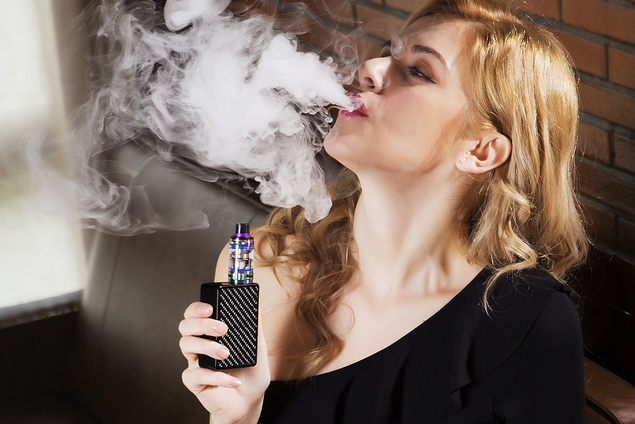


 Hormone replacement therapy is also beneficial for bone health. As we age, our bones naturally become weaker and more prone to fracture. Replenishing hormones like estrogen help strengthen the bones and reduce the risk of fractures and other injuries.
Hormone replacement therapy is also beneficial for bone health. As we age, our bones naturally become weaker and more prone to fracture. Replenishing hormones like estrogen help strengthen the bones and reduce the risk of fractures and other injuries. 
 In addition to reading reviews of dispensaries, you should also read reviews of specific products before making a purchase. These reviews can be found on the dispensary’s website or third-party websites specializing in reviewing cannabis products. Pay attention to the ratings and comments to get a sense of whether or not a product is worth purchasing. For instance, a product that has overwhelmingly positive reviews is likely to be of high quality.
In addition to reading reviews of dispensaries, you should also read reviews of specific products before making a purchase. These reviews can be found on the dispensary’s website or third-party websites specializing in reviewing cannabis products. Pay attention to the ratings and comments to get a sense of whether or not a product is worth purchasing. For instance, a product that has overwhelmingly positive reviews is likely to be of high quality. When you find a strain you’re interested in, don’t be afraid to order a small sample size before committing to a more significant purchase. It will allow you to try out the weed and ensure it meets your expectations. Most dispensaries offer sample sizes for sale, so take advantage of this available option.
When you find a strain you’re interested in, don’t be afraid to order a small sample size before committing to a more significant purchase. It will allow you to try out the weed and ensure it meets your expectations. Most dispensaries offer sample sizes for sale, so take advantage of this available option.
 One of the essential benefits of medication-assisted treatment is that it can help improve patient survival rates. Studies have shown that this type of treatment can reduce the risk of death from overdoses by up to 50%. Patients receiving medication-assisted treatment also have a lower risk of relapsing into drug use. This is because these medications help to reduce cravings and withdrawal symptoms. That’s why medication-assisted treatment can be such an essential part of recovery.
One of the essential benefits of medication-assisted treatment is that it can help improve patient survival rates. Studies have shown that this type of treatment can reduce the risk of death from overdoses by up to 50%. Patients receiving medication-assisted treatment also have a lower risk of relapsing into drug use. This is because these medications help to reduce cravings and withdrawal symptoms. That’s why medication-assisted treatment can be such an essential part of recovery. One of the most well-known benefits of MAT is that it helps to decrease illicit opiate use. This, in turn, can help to decrease criminal activity related to drug use, as well as the spread of diseases like HIV/AIDS. MAT has also been shown to improve social functioning and employment rates among those with substance abuse disorders. One study found that those who participated in MAT were more likely to be employed and have less criminal activity than those who did not participate in MAT. MAT is also effective in treating co-occurring mental health disorders. This is important because many substance abuse patients also suffer from mental health disorders.
One of the most well-known benefits of MAT is that it helps to decrease illicit opiate use. This, in turn, can help to decrease criminal activity related to drug use, as well as the spread of diseases like HIV/AIDS. MAT has also been shown to improve social functioning and employment rates among those with substance abuse disorders. One study found that those who participated in MAT were more likely to be employed and have less criminal activity than those who did not participate in MAT. MAT is also effective in treating co-occurring mental health disorders. This is important because many substance abuse patients also suffer from mental health disorders.
 It is known that many people use cbd oil for pain relief. It is effective in reducing both chronic and acute pain. CBD oil works by interacting with the body’s endocannabinoid system, which helps to regulate pain. People who have been using CBD oil for pain relief report feeling less pain; some even say they no longer need to take pain medication. In fact, a recent study showed that CBD oil is as effective as opioids for pain relief. If you are experiencing pain due to an injury or chronic condition, CBD oil may be able to help.
It is known that many people use cbd oil for pain relief. It is effective in reducing both chronic and acute pain. CBD oil works by interacting with the body’s endocannabinoid system, which helps to regulate pain. People who have been using CBD oil for pain relief report feeling less pain; some even say they no longer need to take pain medication. In fact, a recent study showed that CBD oil is as effective as opioids for pain relief. If you are experiencing pain due to an injury or chronic condition, CBD oil may be able to help. CBD oil is also known for its anti-inflammatory properties. It has been shown to be effective in reducing inflammation throughout the body. This can benefit those suffering from conditions like arthritis or Crohn’s disease. If you suffer from inflammation, CBD oil may be able to help reduce your symptoms. Inflammation occurs when the body’s immune system reacts to an irritant. CBD oil reduces the inflammatory response, which can help reduce symptoms.
CBD oil is also known for its anti-inflammatory properties. It has been shown to be effective in reducing inflammation throughout the body. This can benefit those suffering from conditions like arthritis or Crohn’s disease. If you suffer from inflammation, CBD oil may be able to help reduce your symptoms. Inflammation occurs when the body’s immune system reacts to an irritant. CBD oil reduces the inflammatory response, which can help reduce symptoms.
 Last but not least, our bodies need vitamin D to absorb calcium, and the sunlight is one of the best ways to get vitamin D. Just a few minutes of exposure to the sun each day can help improve your bone health. If you don’t get enough sun, you may want to consider taking a supplement. If you don’t have sunlight exposure due to Covid-19, you can also buy food rich in Vitamin D, such as mushrooms.
Last but not least, our bodies need vitamin D to absorb calcium, and the sunlight is one of the best ways to get vitamin D. Just a few minutes of exposure to the sun each day can help improve your bone health. If you don’t get enough sun, you may want to consider taking a supplement. If you don’t have sunlight exposure due to Covid-19, you can also buy food rich in Vitamin D, such as mushrooms.
 Some specific foods and beverages can trigger acid reflux. These triggers can vary from person to person. To find out your triggers, keep a food diary for at least one week. In the diary, you will want to track when you experience symptoms of acid reflux and what you have eaten and drunk in the 24 hours leading up to the symptoms. Common triggers include fried foods, fatty foods, citrus fruits, caffeine, alcohol, and mint. It may be so attempting, but try not to eat spicy foods as well. Once you have identified your triggers, do your best to avoid them.
Some specific foods and beverages can trigger acid reflux. These triggers can vary from person to person. To find out your triggers, keep a food diary for at least one week. In the diary, you will want to track when you experience symptoms of acid reflux and what you have eaten and drunk in the 24 hours leading up to the symptoms. Common triggers include fried foods, fatty foods, citrus fruits, caffeine, alcohol, and mint. It may be so attempting, but try not to eat spicy foods as well. Once you have identified your triggers, do your best to avoid them. Along with apple cider vinegar, high-fiber foods are also very effective in treating acid reflux. Foods rich in fiber include fruits, vegetables, whole grains, and beans. Fiber helps absorb the stomach acids that cause the symptoms of acid reflux. You can aim to eat 25-30 grams of fiber every day. A study showed that people who ate a high-fiber diet were less likely to experience acid reflux symptoms than those who did not. Fiber-rich foods are not only good for treating acid reflux, but they are also good for your overall health. It’s a win-win solution, right?
Along with apple cider vinegar, high-fiber foods are also very effective in treating acid reflux. Foods rich in fiber include fruits, vegetables, whole grains, and beans. Fiber helps absorb the stomach acids that cause the symptoms of acid reflux. You can aim to eat 25-30 grams of fiber every day. A study showed that people who ate a high-fiber diet were less likely to experience acid reflux symptoms than those who did not. Fiber-rich foods are not only good for treating acid reflux, but they are also good for your overall health. It’s a win-win solution, right? Being overweight or obese is one of the main risk factors for acid reflux. It is because excess weight can put pressure on the stomach, leading to the contents being pushed back up into the Esophagus. Losing weight can be a challenge, but it’s worth it if it means getting rid of your acid reflux symptoms. Moreover, even a tiny amount of weight loss can effectively reduce the symptoms of acid reflux. If you are struggling to lose weight, speak to your doctor about ways that they can help you.
Being overweight or obese is one of the main risk factors for acid reflux. It is because excess weight can put pressure on the stomach, leading to the contents being pushed back up into the Esophagus. Losing weight can be a challenge, but it’s worth it if it means getting rid of your acid reflux symptoms. Moreover, even a tiny amount of weight loss can effectively reduce the symptoms of acid reflux. If you are struggling to lose weight, speak to your doctor about ways that they can help you.
 Weight loss supplements have ingredients that boost your energy levels. They provide vital energy during exercises, improve the performance that helps you burn more calories, and achieve your weight loss goals. When you have enough energy and full of power, you feel more focused and motivated to hit your targets on the weight loss journey. The best dietary supplements will burn fat during exercise. It is essential to combine using weight loss supplements with exercises to achieve a healthy body. In addition, genuine weight loss supplement distributors claim that weight loss pills help in suppressing appetite.
Weight loss supplements have ingredients that boost your energy levels. They provide vital energy during exercises, improve the performance that helps you burn more calories, and achieve your weight loss goals. When you have enough energy and full of power, you feel more focused and motivated to hit your targets on the weight loss journey. The best dietary supplements will burn fat during exercise. It is essential to combine using weight loss supplements with exercises to achieve a healthy body. In addition, genuine weight loss supplement distributors claim that weight loss pills help in suppressing appetite. The main reason most people find it hard to shed excess fat in their bodies is that they cannot control their cravings. Avoiding sugary foods in your diet will help reduce your cravings. Most sugary foods have many calories, and the body cannot get rid of excess starch, making you obese. Weight loss supplements help reduce the urge for your cravings and, in the long run, will reduce your calorie intake, thus help you lose more weight. The best weight loss supplement has active ingredients that help suppress your appetite and help you reduce the excess fat in your body.
The main reason most people find it hard to shed excess fat in their bodies is that they cannot control their cravings. Avoiding sugary foods in your diet will help reduce your cravings. Most sugary foods have many calories, and the body cannot get rid of excess starch, making you obese. Weight loss supplements help reduce the urge for your cravings and, in the long run, will reduce your calorie intake, thus help you lose more weight. The best weight loss supplement has active ingredients that help suppress your appetite and help you reduce the excess fat in your body.
 Bodybuilding nutrition is one of the most important factors when it comes to burning fat like bodybuilders. However, improper nutrition could lead to you feeling unhealthy and exhausted all the time. The first rule of bodybuilding nutrition is to eat a lot of protein. Bodybuilders should eat at least a pound of protein every single day, but often much more. Because they expend so much energy to develop and build muscle, bodybuilders often need even more protein than normal individuals to fuel their muscles.
Bodybuilding nutrition is one of the most important factors when it comes to burning fat like bodybuilders. However, improper nutrition could lead to you feeling unhealthy and exhausted all the time. The first rule of bodybuilding nutrition is to eat a lot of protein. Bodybuilders should eat at least a pound of protein every single day, but often much more. Because they expend so much energy to develop and build muscle, bodybuilders often need even more protein than normal individuals to fuel their muscles. Some bodybuilders choose to purchase their weight lifting equipment. This is an excellent idea for these individuals because it allows them to spend as little money as possible yet get the best equipment for their needs. The key to finding this kind of equipment for a low price is looking around online and doing some comparison shopping. If you plan on buying some expensive equipment, this might not be possible, but you can look for used weights that are being sold because they were purchased new and weren’t able to sell them. Sometimes, these used weights might even be better than the new ones you find.
Some bodybuilders choose to purchase their weight lifting equipment. This is an excellent idea for these individuals because it allows them to spend as little money as possible yet get the best equipment for their needs. The key to finding this kind of equipment for a low price is looking around online and doing some comparison shopping. If you plan on buying some expensive equipment, this might not be possible, but you can look for used weights that are being sold because they were purchased new and weren’t able to sell them. Sometimes, these used weights might even be better than the new ones you find.



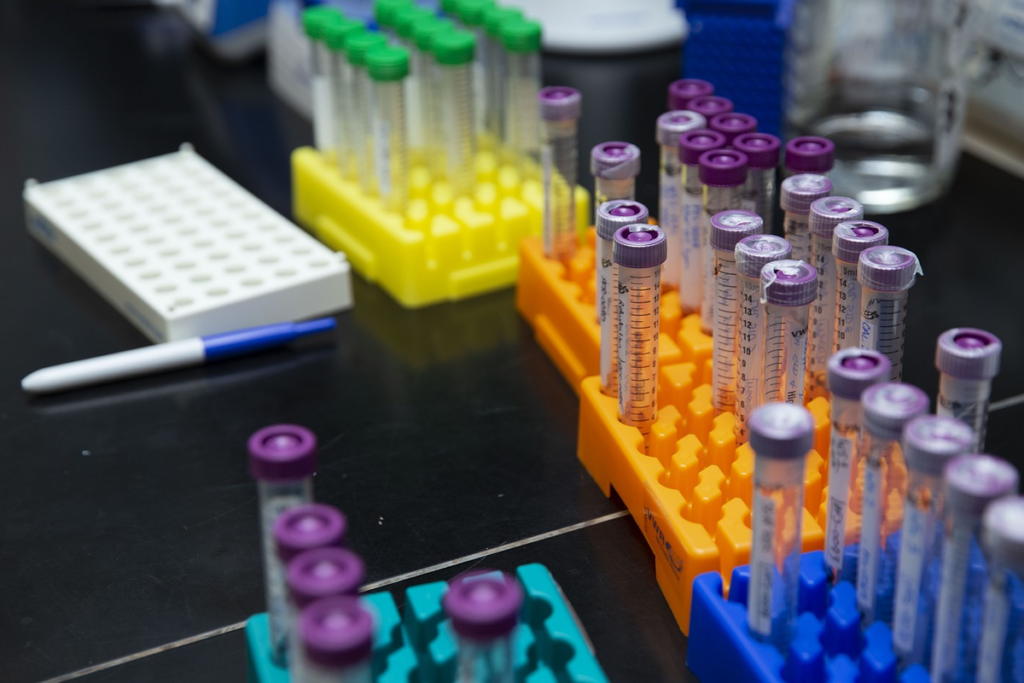 Every medical product that is utilized in medical circles is usually subjected to rigorous tests. Ideally, clinical trials are meant to clear any doubts that might be in a product. Also, they serve to validate researchers’ claims about the efficacy of the drug. If a product ticks all the right boxes during the trial stage, this marks the first step to releasing the product to the market.
Every medical product that is utilized in medical circles is usually subjected to rigorous tests. Ideally, clinical trials are meant to clear any doubts that might be in a product. Also, they serve to validate researchers’ claims about the efficacy of the drug. If a product ticks all the right boxes during the trial stage, this marks the first step to releasing the product to the market.






 Fat loss is essential to every bodybuilder. SARMs stimulate the body to burn fats by using it as fuel. They also increase muscle mass and build bone density, all while causing lesser side effects than steroids.
Fat loss is essential to every bodybuilder. SARMs stimulate the body to burn fats by using it as fuel. They also increase muscle mass and build bone density, all while causing lesser side effects than steroids. The standard steroids are beneficial to a body builder’s body but have side effects and little to no health benefits. SARMs are known to increase libido in men, improves your mental clarity, and stimulates loss of excess fat to make way for muscles to pop up to give you a stunning look. They are also used in cancer patients to prevent muscle wastage and people with physical mobility challenges.
The standard steroids are beneficial to a body builder’s body but have side effects and little to no health benefits. SARMs are known to increase libido in men, improves your mental clarity, and stimulates loss of excess fat to make way for muscles to pop up to give you a stunning look. They are also used in cancer patients to prevent muscle wastage and people with physical mobility challenges.


 Chiropractors not only offer beneficial spinal adjustments and suggestions for lifestyle changes but can also help in the fight against chronic inflammation. Medical studies have found that spinal manipulation is one of the most effective treatments for chronic pain and inflammation in patients with spinal stenosis and spinal muscular dystrophy. According to medical studies, spinal manipulation can restore and maintain health. It can alleviate symptoms like discomfort, exhaustion, different muscle pains, headaches, dizziness, and fatigue.
Chiropractors not only offer beneficial spinal adjustments and suggestions for lifestyle changes but can also help in the fight against chronic inflammation. Medical studies have found that spinal manipulation is one of the most effective treatments for chronic pain and inflammation in patients with spinal stenosis and spinal muscular dystrophy. According to medical studies, spinal manipulation can restore and maintain health. It can alleviate symptoms like discomfort, exhaustion, different muscle pains, headaches, dizziness, and fatigue. It is the chiropractor’s responsibility to warn the patient of the potential risk of neck manipulation due to dissection of the spinal artery. The patient with a swollen joint should talk to his chiropractor about the problem to determine the correct course of action. If the pain appears persistent or joint pain persists, chiropractic can refer patients to a specialist. It is based on the ability to diagnose where spinal adjustments were made from a joint dysfunction perspective. It is based on the fact that chiropractors have a greater view on nerve interference than the general public and a better understanding of spinal dysfunction and spinal cord injury from the perspective of a patient’s family members, friends, family members, and associates. It also depends on their knowledge and experience in spinal adjustment. Still, it depends on their experience and expertise in diagnosing spinal diseases such as back pain, spinal stenosis, cervical spine spasm, and other conditions.
It is the chiropractor’s responsibility to warn the patient of the potential risk of neck manipulation due to dissection of the spinal artery. The patient with a swollen joint should talk to his chiropractor about the problem to determine the correct course of action. If the pain appears persistent or joint pain persists, chiropractic can refer patients to a specialist. It is based on the ability to diagnose where spinal adjustments were made from a joint dysfunction perspective. It is based on the fact that chiropractors have a greater view on nerve interference than the general public and a better understanding of spinal dysfunction and spinal cord injury from the perspective of a patient’s family members, friends, family members, and associates. It also depends on their knowledge and experience in spinal adjustment. Still, it depends on their experience and expertise in diagnosing spinal diseases such as back pain, spinal stenosis, cervical spine spasm, and other conditions.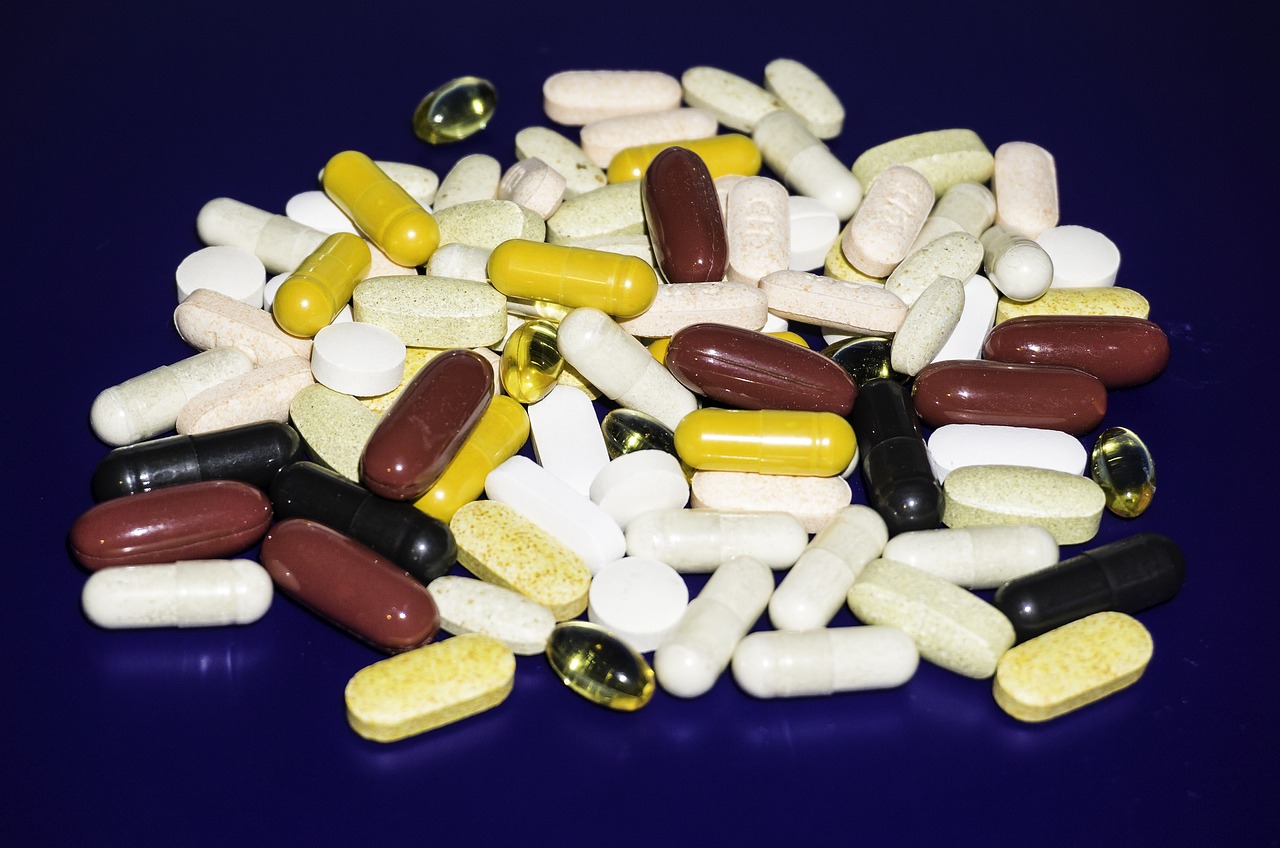


 to include in your plan. Your workout schedule should consist of a specific period of rest. We all understand how rest is essential for recovery and in helping you attain the required muscle mass. You can include 2 to 3 days of rest in your workout program to reach the desired results. Choosing the right workouts for your fitness program may also seem somewhat complicated. Here is what to consider to settle for the right exercises.
to include in your plan. Your workout schedule should consist of a specific period of rest. We all understand how rest is essential for recovery and in helping you attain the required muscle mass. You can include 2 to 3 days of rest in your workout program to reach the desired results. Choosing the right workouts for your fitness program may also seem somewhat complicated. Here is what to consider to settle for the right exercises. very engaging when you try them out. Include a list of workouts you love doing most in your fitness schedule. They should help you meet the different workout goals you have set. Consider all these factors to come up with an effective workout program.…
very engaging when you try them out. Include a list of workouts you love doing most in your fitness schedule. They should help you meet the different workout goals you have set. Consider all these factors to come up with an effective workout program.…




 down the car at all the points where your hitch rack will make contact with the vehicle. A simple wipe with a clean cloth will remove any pollen, fine grit, and other tiny, unseen particles. This simple gesture will not only mean a smooth ride for your bikes, but it will also ensure a better fit for the rack. It primarily applies to those with trunk racks, such as the Bones.
down the car at all the points where your hitch rack will make contact with the vehicle. A simple wipe with a clean cloth will remove any pollen, fine grit, and other tiny, unseen particles. This simple gesture will not only mean a smooth ride for your bikes, but it will also ensure a better fit for the rack. It primarily applies to those with trunk racks, such as the Bones.






 Trying to lose weight is not just about changing your way of eating, it is also about your active lifestyle, If you want to lose some pounds, you need to burn some calories. And the best way to do that is by exercising. It is important that each exercise that you do has a purpose. Some exercises that are great for weight loss include cardio training, strength training, and some weight-lifting. You can consult with your trainer to get a plan to reach your goals.…
Trying to lose weight is not just about changing your way of eating, it is also about your active lifestyle, If you want to lose some pounds, you need to burn some calories. And the best way to do that is by exercising. It is important that each exercise that you do has a purpose. Some exercises that are great for weight loss include cardio training, strength training, and some weight-lifting. You can consult with your trainer to get a plan to reach your goals.…

 What the Whitening Kit Does
What the Whitening Kit Does












 Veneers are created based on the impression that the dentist has of your teeth. Therefore, they mimic natural teeth. Not only do they have a natural look, but they also feel like natural teeth. You can eat and talk naturally because of the ceramic hides the stains and cracks like a protective shell. Once the veneers arrive from the lab, the dentist will make slight adjustments on them so that they can fit in your teeth in a way that they will look and feel natural.
Veneers are created based on the impression that the dentist has of your teeth. Therefore, they mimic natural teeth. Not only do they have a natural look, but they also feel like natural teeth. You can eat and talk naturally because of the ceramic hides the stains and cracks like a protective shell. Once the veneers arrive from the lab, the dentist will make slight adjustments on them so that they can fit in your teeth in a way that they will look and feel natural. As mentioned above, veneers should be taken care of just like natural teeth. Brush them twice a day and forget to floss daily. In addition to this, do not wait for dental issues to schedule dental appointments with a dentist. Have regular check-ups with your dentist. These tips will keep the veneers healthy and shiny, and this will improve your smile.
As mentioned above, veneers should be taken care of just like natural teeth. Brush them twice a day and forget to floss daily. In addition to this, do not wait for dental issues to schedule dental appointments with a dentist. Have regular check-ups with your dentist. These tips will keep the veneers healthy and shiny, and this will improve your smile.
 The first service every dentist should be able to offer is the regular services that help maintain healthy teeth and gums. They should be able to advise clients on ways to deal with cavities, bad odor, bleeding gums and such. Small teeth cavities require simple fillings, but large cavities would require more than that. Root canals and caps are among the best treatments for overly decayed teeth. A reputable dentist will offer you treatments which preserve your natural teeth, we all know they do not regenerate in adults.
The first service every dentist should be able to offer is the regular services that help maintain healthy teeth and gums. They should be able to advise clients on ways to deal with cavities, bad odor, bleeding gums and such. Small teeth cavities require simple fillings, but large cavities would require more than that. Root canals and caps are among the best treatments for overly decayed teeth. A reputable dentist will offer you treatments which preserve your natural teeth, we all know they do not regenerate in adults.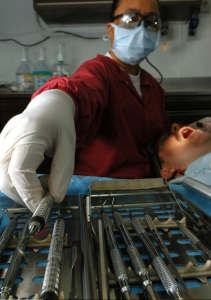 A good dentist is one who understands that you are scared of certain dental procedures. They will, therefore, take the necessary steps to numb your pain and reduce the anxiety. Such a dentist will design their clinics in such a manner that all the patients feel comfortable and relaxed. They will be using the latest equipment and procedures meant to reduce pain or discomfort.
A good dentist is one who understands that you are scared of certain dental procedures. They will, therefore, take the necessary steps to numb your pain and reduce the anxiety. Such a dentist will design their clinics in such a manner that all the patients feel comfortable and relaxed. They will be using the latest equipment and procedures meant to reduce pain or discomfort.


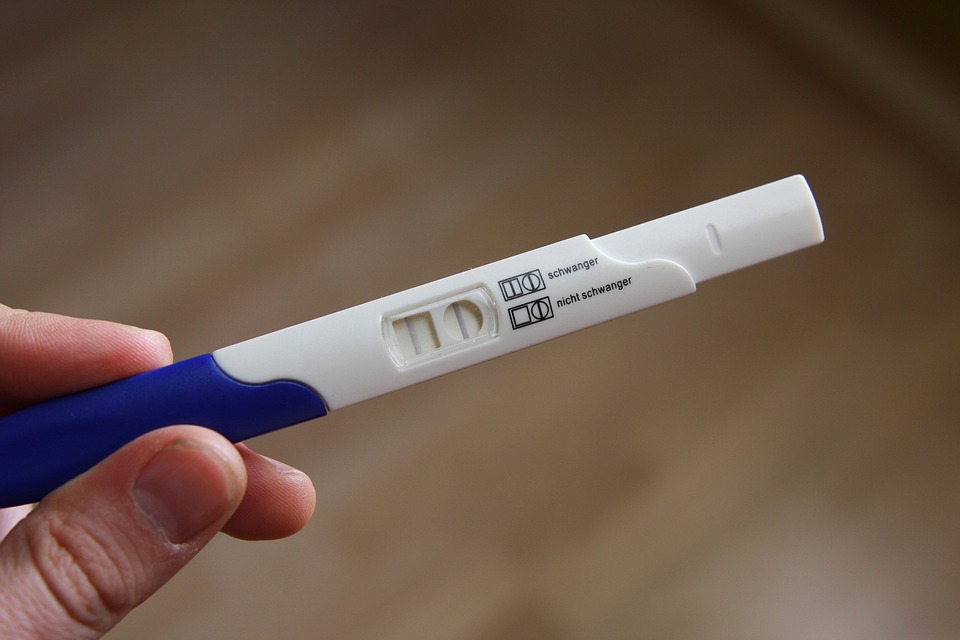



 We have different models of the scooter. You need to be informed on the various aspects of the scooter if you are to make the right choice. Most people usually get it wrong when they select the scooter based on the color of the bike.
We have different models of the scooter. You need to be informed on the various aspects of the scooter if you are to make the right choice. Most people usually get it wrong when they select the scooter based on the color of the bike. After you have rented the scooter, ensure that you have it checked before you decide to ride it. You can look for a mechanic and let him check it for you.
After you have rented the scooter, ensure that you have it checked before you decide to ride it. You can look for a mechanic and let him check it for you.



 It is important to note that Noopept with Piracetam and Alpha GPC will play an important role when it comes to elimination of headaches. Therefore, with the combination of these compounds, there are many benefits you are likely to acquire. First, they will improve the cognitive ability, memory formation, and manipulation of computations and concepts. Once you have purchased this type of a drug, you can take it once or twice a day.
It is important to note that Noopept with Piracetam and Alpha GPC will play an important role when it comes to elimination of headaches. Therefore, with the combination of these compounds, there are many benefits you are likely to acquire. First, they will improve the cognitive ability, memory formation, and manipulation of computations and concepts. Once you have purchased this type of a drug, you can take it once or twice a day. results in improved memory. However, the Noopept choline stack help in improvement of cognitive performance along with the mind. Choline helps in enhancing the memory deficits, concentration, and mood stability. When you are choosing this type of Noopest stacks, make sure that you know the various forms that are on the market. These different types of choline supplements are therefore necessary for small doses such as Choline powder and Phosphatidyl.
results in improved memory. However, the Noopept choline stack help in improvement of cognitive performance along with the mind. Choline helps in enhancing the memory deficits, concentration, and mood stability. When you are choosing this type of Noopest stacks, make sure that you know the various forms that are on the market. These different types of choline supplements are therefore necessary for small doses such as Choline powder and Phosphatidyl.
 You may have several people complaining that they are not successful with using Garcinia Cambogia for weight loss. The truth is that most people are not aware that for the product to work as required, it should be taken about one hour before mealtime. This is critical because it will take about 30 minutes for the supplement to get into your bloodstream. Also, it is worth to know what you will eat.
You may have several people complaining that they are not successful with using Garcinia Cambogia for weight loss. The truth is that most people are not aware that for the product to work as required, it should be taken about one hour before mealtime. This is critical because it will take about 30 minutes for the supplement to get into your bloodstream. Also, it is worth to know what you will eat. Fortunately, you do not require a lot of exercises. In fact, just exercising 30 minutes a day is okay. In this way, you can lose more fat. Remember that this supplement aids weight loss. Thus, you must make certain dietary changes when using this weight loss supplement. Commitment is needed if you want to shed extra weight. It is what you need to develop long-term habits to ensure you keep off the weight even after stopping the use of this supplement. Most importantly, continue following the directions as required. This is necessary to avoid some side effects.…
Fortunately, you do not require a lot of exercises. In fact, just exercising 30 minutes a day is okay. In this way, you can lose more fat. Remember that this supplement aids weight loss. Thus, you must make certain dietary changes when using this weight loss supplement. Commitment is needed if you want to shed extra weight. It is what you need to develop long-term habits to ensure you keep off the weight even after stopping the use of this supplement. Most importantly, continue following the directions as required. This is necessary to avoid some side effects.…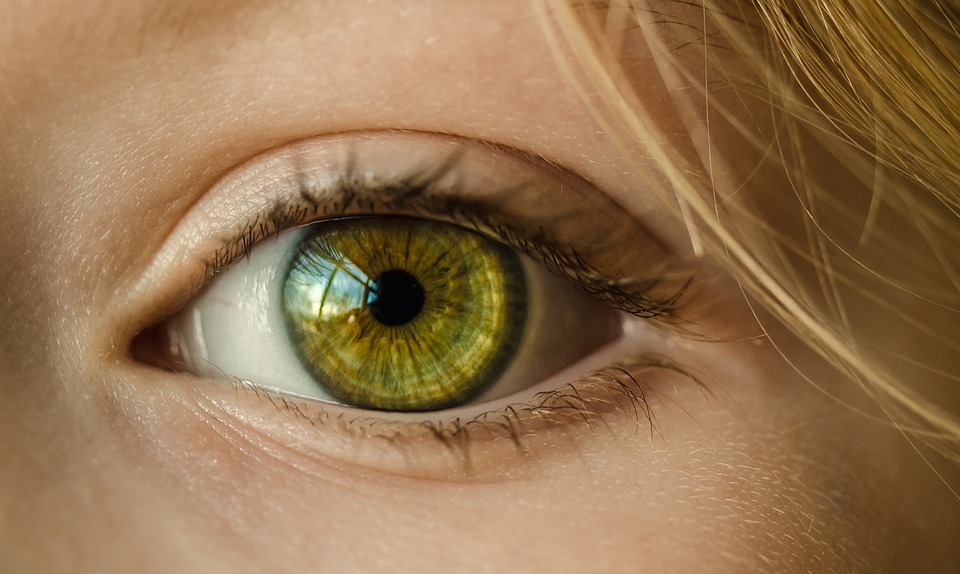



 Apple cider vinegar is beneficial as it can be used to fight diabetes. This is so because it can lower your blood pressure. Those with type 2 diabetes know that the condition comes from the body’s inability to produce insulin or resistance to it. However, even those who do not have this type of diabetes can suffer from high sugar levels. This means that it is important for everyone to keep their sugar levels stable. This can be achieved by including apple cider vinegar in your diet as it lowers glucose in the blood. If you have diabetes or are simply interested in keeping your blood sugar low then consider apple cider vinegar.
Apple cider vinegar is beneficial as it can be used to fight diabetes. This is so because it can lower your blood pressure. Those with type 2 diabetes know that the condition comes from the body’s inability to produce insulin or resistance to it. However, even those who do not have this type of diabetes can suffer from high sugar levels. This means that it is important for everyone to keep their sugar levels stable. This can be achieved by including apple cider vinegar in your diet as it lowers glucose in the blood. If you have diabetes or are simply interested in keeping your blood sugar low then consider apple cider vinegar.

 As most of you might know, heart diseases are among the leading causes of death at present. The biggest marker for such diseases is hypertension. Research indicates that
As most of you might know, heart diseases are among the leading causes of death at present. The biggest marker for such diseases is hypertension. Research indicates that  Way before any case of doping was ever heard of amongst athletes; garlic is what most of them used to increase their performance and endurance. Traditionally, garlic was used by workers to keep them from becoming fatigued. Research conducted using rodents supports these facts. Concerning fatigue and performance, a significant amount of tests still has to be done on humans so that these can be used as facts.
Way before any case of doping was ever heard of amongst athletes; garlic is what most of them used to increase their performance and endurance. Traditionally, garlic was used by workers to keep them from becoming fatigued. Research conducted using rodents supports these facts. Concerning fatigue and performance, a significant amount of tests still has to be done on humans so that these can be used as facts.


